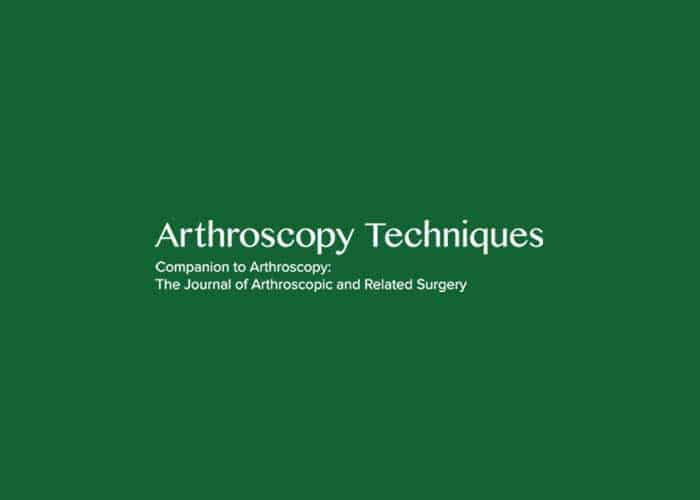
Authors:
Peter J. Millett, M.D., M.S., J. Christoph Katthagen, M.D., Jack Anavian, M.D., Dimitri S. Tahal, M.S.
Abstract:
Bipolar bone loss in patients with anterior glenohumeral instability is challenging to treat. The goal of the treatment is to restore stability by ensuring that the humeral head remains within the glenoid vault. This can be achieved either with the combination of an arthroscopic Bankart procedure and remplissage (glenoid bone loss <25%), or with a Latarjet procedure (glenoid bone loss >25%). In cases with more severe bipolar bone loss of both the glenoid and the humeral head, the conventional approach has been to lengthen the articular arc of the glenoid and to ignore the Hill-Sachs lesion. However, it has recently been shown that this can still lead to an “off-track” situation with persistent shoulder instability from engagement of the Hill-Sachs on the anterior glenoid. In these cases, the combination of a Hill-Sachs remplissage and the Latarjet procedure can be effective in preventing persistent instability. In this technical note, the surgical technique of an arthroscopic Hill-Sachs remplissage in combination with an open Latarjet procedure is presented.
Severe bipolar bone loss (BBL) in patients with anterior glenohumeral instability (AGI) requires individual treatment strategies depending on the size and location of the bony defects of both the glenoid and the humeral head.1, 2 In such cases with BBL, it is an important factor to define whether the humeral head is on-track or off-track.3, 4, 5 This calculation takes into account the combined bone defects and their locations. In addition, the amount of anterior glenoid bone loss is an essential determinant for the choice of treatment for BBL in AGI. In patients with anterior glenoid deficiency of less than 25%, a combination of an anterior Bankart procedure and posterior remplissage is recommended.6, 7, 8 If the anterior glenoid bone loss exceeds 25% of the anteroposterior expansion, the Latarjet procedure alone is usually indicated.6, 8 In “borderline” cases with distinct BBL of both the glenoid and the humeral head, the combination of a Bankart procedure and a remplissage can severely reduce the capsular volume and restrict the range of glenohumeral motion, especially the range of rotation.7 As Mook et al. have shown, in cases with more severe BBL treated with the Latarjet procedure alone, the humeral head can still be off-track if the Hill-Sachs lesion is not addressed.4 In these cases, the combination of a Hill-Sachs remplissage and the Latarjet procedure should be considered.9 Although conceptually this approach makes sense, performing both procedures together can be technically challenging and has not been described well in the literature. This technical note, therefore, presents the surgical technique of an arthroscopic Hill-Sachs remplissage in combination with an open Latarjet procedure.
Download the PDF of: Arthroscopic Remplissage and Open Latarjet Procedure for the Treatment of Anterior Glenohumeral Instability With Severe Bipolar Bone Loss
